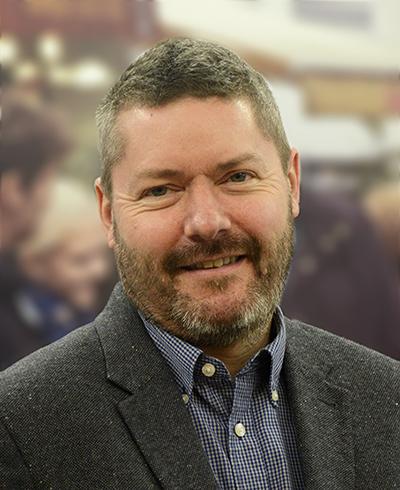Research interests
I have broad research interests around Quaternary research, but specialise in reconstructing past environmental change from lake and peat sediments. I have worked on sediment sequences from every continent bar Antarctica, and tackled major research projects working on reconstructing past climate change, lake pollution and health, human-climate inter-relationships, and advanced the understanding of ecosystem tipping points.
PhD supervision
I have supervised 14 PhD students to completion, and am currently involved in supervising the following students:
- Yanjie Zhao (CSC funded) Regime shifts in shallow lakes: palaeoecological and agent-based modelling approaches. Co-supervise with John Dearing and Patrick Doncaster.
- Charlotte Hipkiss (NERC funded) Stress in paradise: Reconstructing Late Holocene hydroclimate to test the “drought hypothesis” for prehistoric migrations within the tropical South Pacific. Co-supervise with David Sear and Justin Sheffield.
- Nichola Strandberg (NERC funded) Environmental change and vegetation response on small South Pacific islands throughout the Holocene. Co-supervise with Sandra Nogue, David Sear and Mary Edwards.
- Magda Steele (IfLS funded) Plant-microbe interactions in peatlands in a changing climate. Co-supervise with Bjorn Robroek, Paul Hughes and Neil Gostling.
Research projects
I am actively working on a number of research projects with a range of collaborators. Key projects include:
Holocene environmental change in the South Pacific (with David Sear and others)
We have been collecting lake and swamp sediment cores from across multiple islands in the South Pacific to build up a coherent picture of centennial to millennial scale climate change in this region. These datasets will allow us to test for long-term changes Pacific related climate phenomena, notably the South Pacific Convergence Zone (SPCZ), and how they interact with changes in major pressure systems across the biggest ocean on the planet. The work also allows us to assess the timing of colonisation on these islands, where climate was a major driver of this, and the impact of colonisation on the island ecosystems (Sear et al. 2020).
This work has been funded through support from NERC, National Geographic, the QRA, University of Southampton, and in collaboration with many in country colleagues.
Celtic Connections and Crannogs (with Tony Brown and others)
Crannogs are island dwellings that are typically located in lakes and mires and have a distribution centred around the Irish Sea, having mostly a ‘Celtic’ distribution across the north of Ireland and Scotland. The project sets out to re-examine crannogs as both a cultural and environmental phenomenon that link Iron Age and Medieval communities of SW Scotland and N Ireland. We still know relatively little concerning their role in society – were they long-lived or restricted to a short period of use, permanent (year-round) settlements, seasonally occupied or ‘boltholes’? Were they functional (storage, craft manufacture) and/or ritual sites or did they have a defensive/protective function for the elite? To answer these questions and explore the cultural significance of these Celtic communities, we need to understand the chronology, longevity, intensity of use, form, function, material culture and environmental context of these sites. This project aims to derive this information from the crannogs themselves through archaeological excavation but also by tracing the signal of the crannogs in the surrounding lake sediments through palaeoenvironmental techniques, including the use of molecular techniques such as sedimentary ancient DNA (sedaDNA). See Brown et al. (2021) for some initial results.
This work was funded through a grant from the AHRC.
Lake ecosystem resilience (with John Dearing, Patrick Doncaster, Roseanna Mayfield, Rong Wang and others)
Many, if not the majority, of freshwater lake systems globally are approaching, or have passed, thresholds to unhealthy biotic states through human activities, exacerbated by climate change, and with recovery often impeded by non-linear or lagged responses (hysteresis). To address these challenges, our group has made a number of breakthroughs in order to understand contemporary freshwater resilience to multidimensional drivers. First, we have identified how freshwater systems can tip to an alternative state through multiple interacting stressors and the forewarning signs of a system crash (Wang et al. 2012). We have used our understanding of systems dynamics and regime shifts to conceptualise how systems may function in a safe operating space, incorporating both biophysical and social factors (Dearing et al. 2014). Subsequently we have developed a series of novel metrics and tools by which to measure freshwater system resilience, over time (Doncaster et al. 2016), across spatially variable pollution and related drivers (Wang et al. 2019), and in the face of climate change (Mayfield et al. 2020, 2021). All this helps ecosystem managers understand and to some extent predict the onset of a critical transition. However, an understanding of how freshwater ecosystems can recover from alternative states is still lacking, and our next phase of research under this broad topic will aim to tackle this.
Climate-environment-human interactions (with Celia Martin Puertas, Simon Blockley [RHUL], Gordon Inglis and others)
Disentangling these driver response relationships remains a major challenge in Quaternary Science. Our work is focused on using annually laminated sediments (e.g. Diss Mere), and/or highly resolved sequences with excellent age controls to better understand these interactions. Our work has shown that early Holocene (c. 11,000 years ago) humans in Britain were able to survive, possibly thrive, through abrupt climate climate events, and it was local environmental change in wetlands that was more significant in determining human activity (Blockley et al., 2018). Ongoing research is focused on using these highly resolved sequences to address key questions around the role of solar variability (e.g. grand solar minima) on atmospheric circulation patterns, and better integrating palaeo data with climate model simulations and decadal predictions.
Research group
Landscape Dynamics and Ecology (LDE)
Affiliate research group
Palaeoenvironmental Laboratory at the University of Southampton (PLUS)
Professor Peter G LangdonUniversity of Southampton
University Road
Southampton
SO17 1BJ
(023) 8059 4086
Room Number : 44/2006
